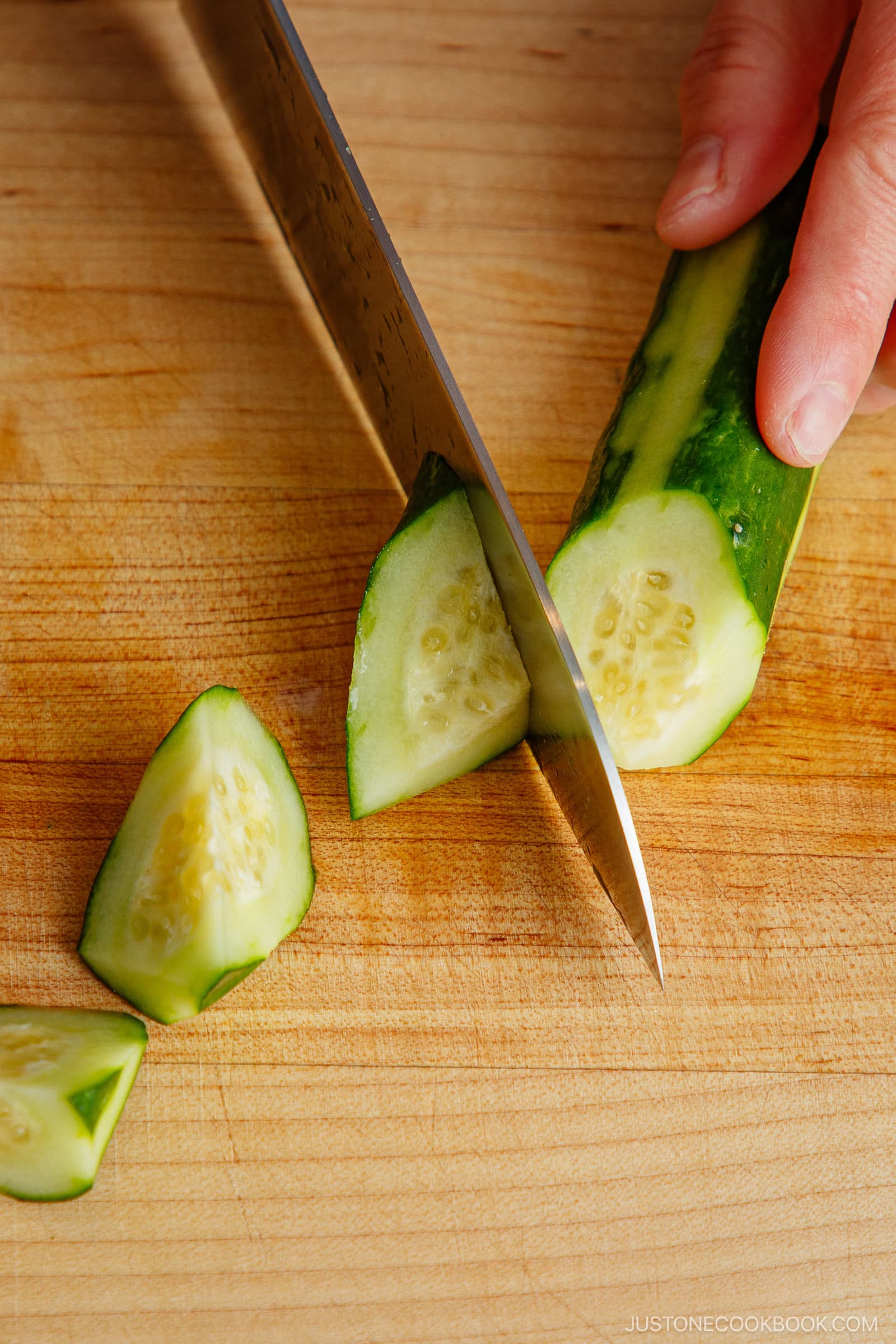
To make irregular rolls of rolls, we use the Rangiri Cutting technique in Japanese cuisine. This method creates vegetable pieces with intentionally varied surfaces that cook evenly and absorb the flavor faster. In this tutorial, I will teach you the Rangiri: random cutting technique So you can cut the vegetables in this captivating shape when cooking Japanese recipes.
Use the Rangiri cutting technique in my Nikujaga (Japanese meat and potato stew), Tonjiru (pork soup and vegetable miso) and Japanese chicken curry curry recipes!
What is Rangiri?
Rangiri (乱切り) means random cut in Japanese, but it is an intentional method. We use this vegetable cutting technique to create Irregular and angled blocks rotating the ingredient between each slice. You can use it to cut radical vegetables, cucumbers, aubergines and other cylindrical vegetables in similar pieces. While they can have various surfaces, they cook more uniformly and absorb the flavor well.

Because I love the Rangiri cutting technique (random cut)
- Vegetables absorb the flavors faster – This method increases the surface of the ingredient to help it absorb the condiments faster. Above all, I like to use these random cuts for dishes and stewed on a slow heat.
- The ingredients cook at the same speed – Rangiri allows me to cut the entire length of a carrot, aubergines and other vegetables in pieces of size of the same size so that all the pieces cook at the same speed for the perfect consistency.
- Makes an attractive form – Transform vegetables into unique and pleasant shapes that offer a beautiful Wabi-Sabi character with stewed and slow fire dishes.
- It translates into less waste – Since I can control the shape and size of the pieces that I cut with Rangiri, they are also able to use the thick and thin ends of the root vegetables that I could otherwise jump.

Types of food for Rangiri (random cut)
- Carrot
- Cucumber
- Daikon
- Eggplant
- Lotus root
- Burdock root (sponge)
Find the Printable tutorial under.
- Knife of sharp cuisine – I recommend a solid chef knife for this task. I use a high quality quality Nagomi chef knife Damascus people that you can find a Goods joc. You could also use a Nakiri knife (Japanese vegetable knife), if you have one.
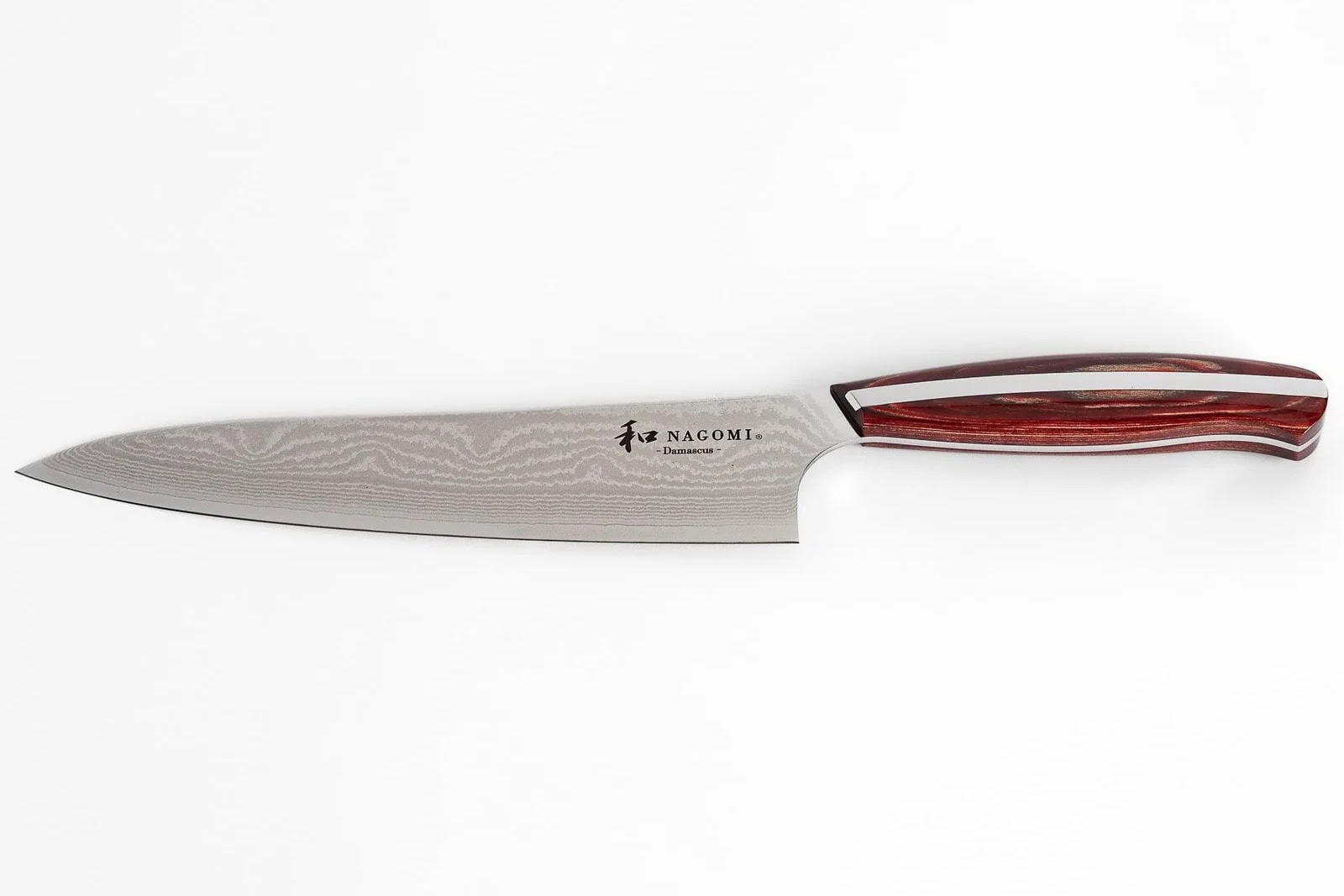
How to do Rangiri (random cut)
- Make a diagonal cut. Keep the vegetable on the cutting board and cut a piece diagonally to the desired size with a sharp knife.
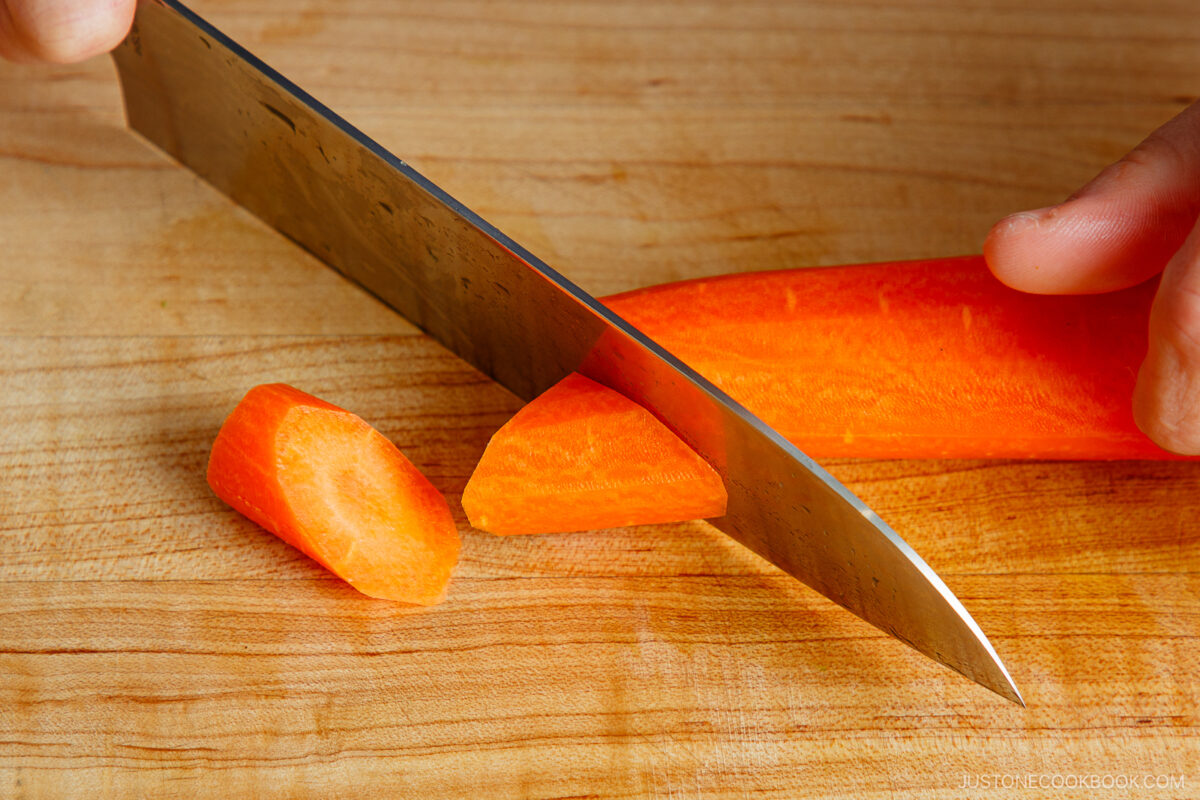
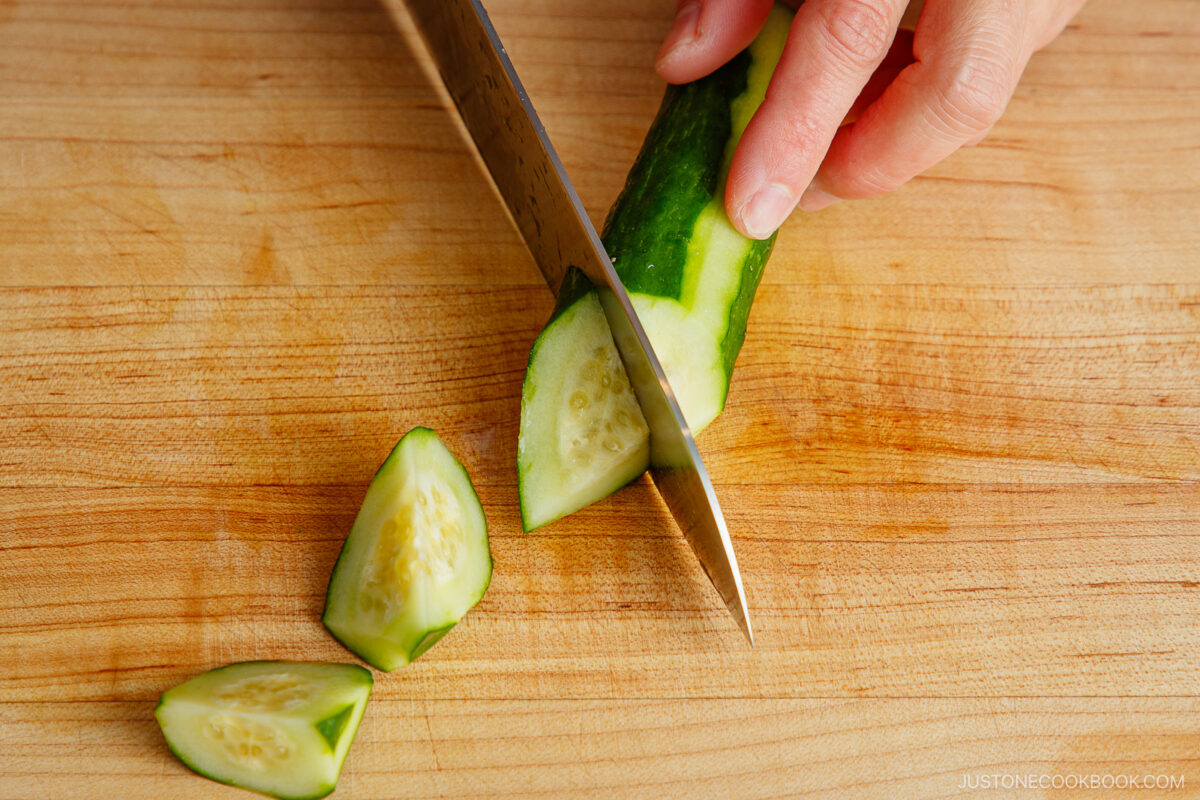
- Revolves a quarter round. Roll the ingredient of 90 degrees, then cut again to the same corner. Keep the pieces of the same size.
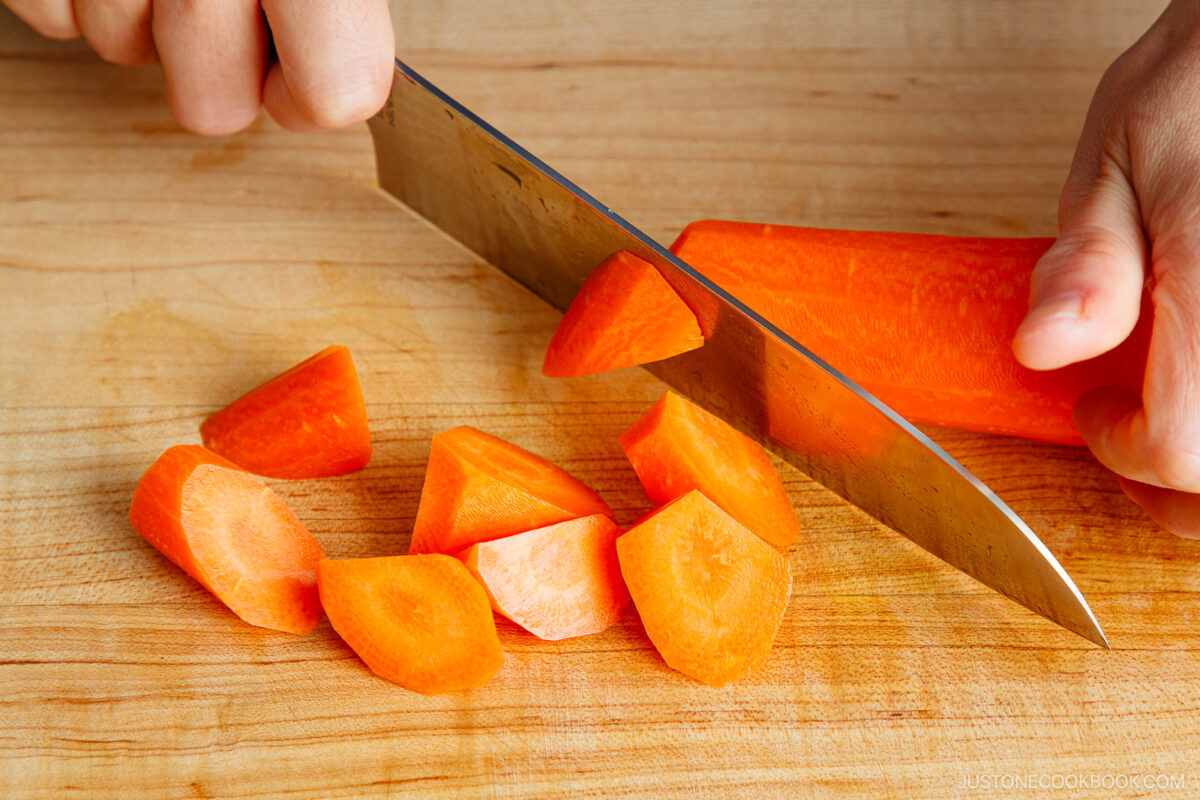
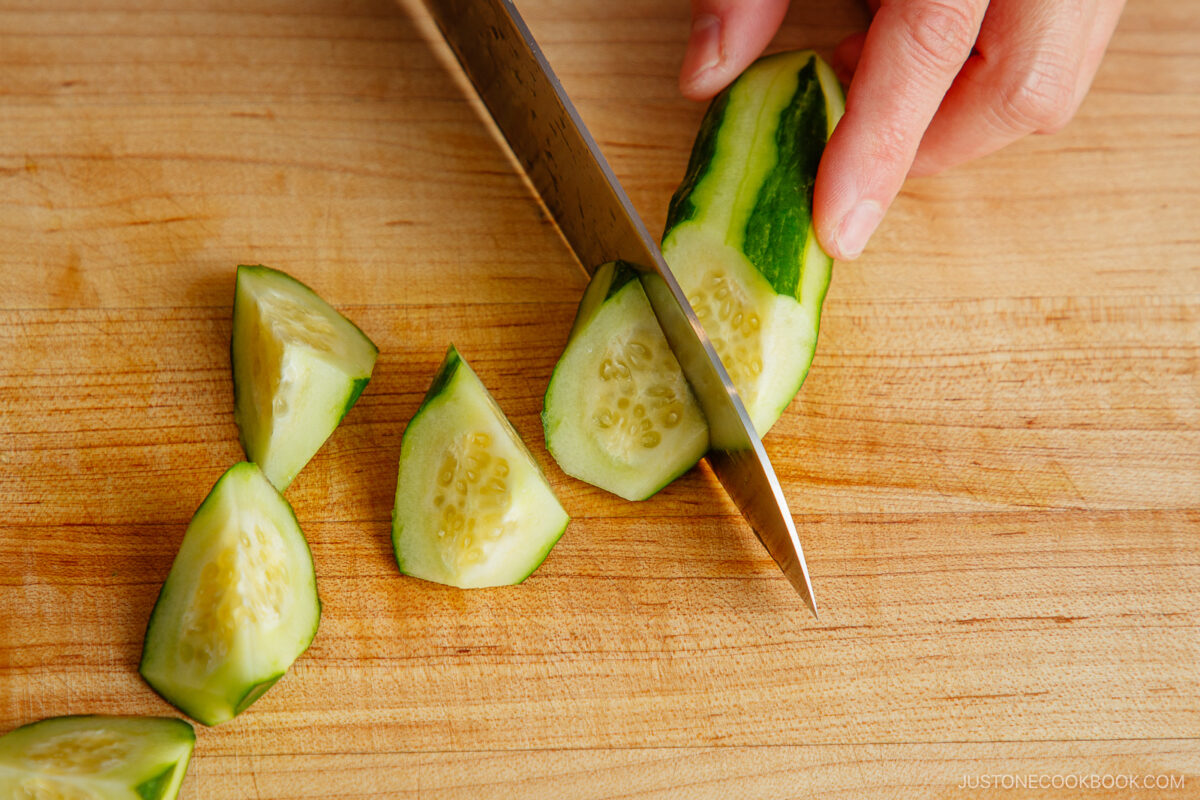
- Repeat. Cut → roll → cut → rolls until you reach the end of the vegetables.
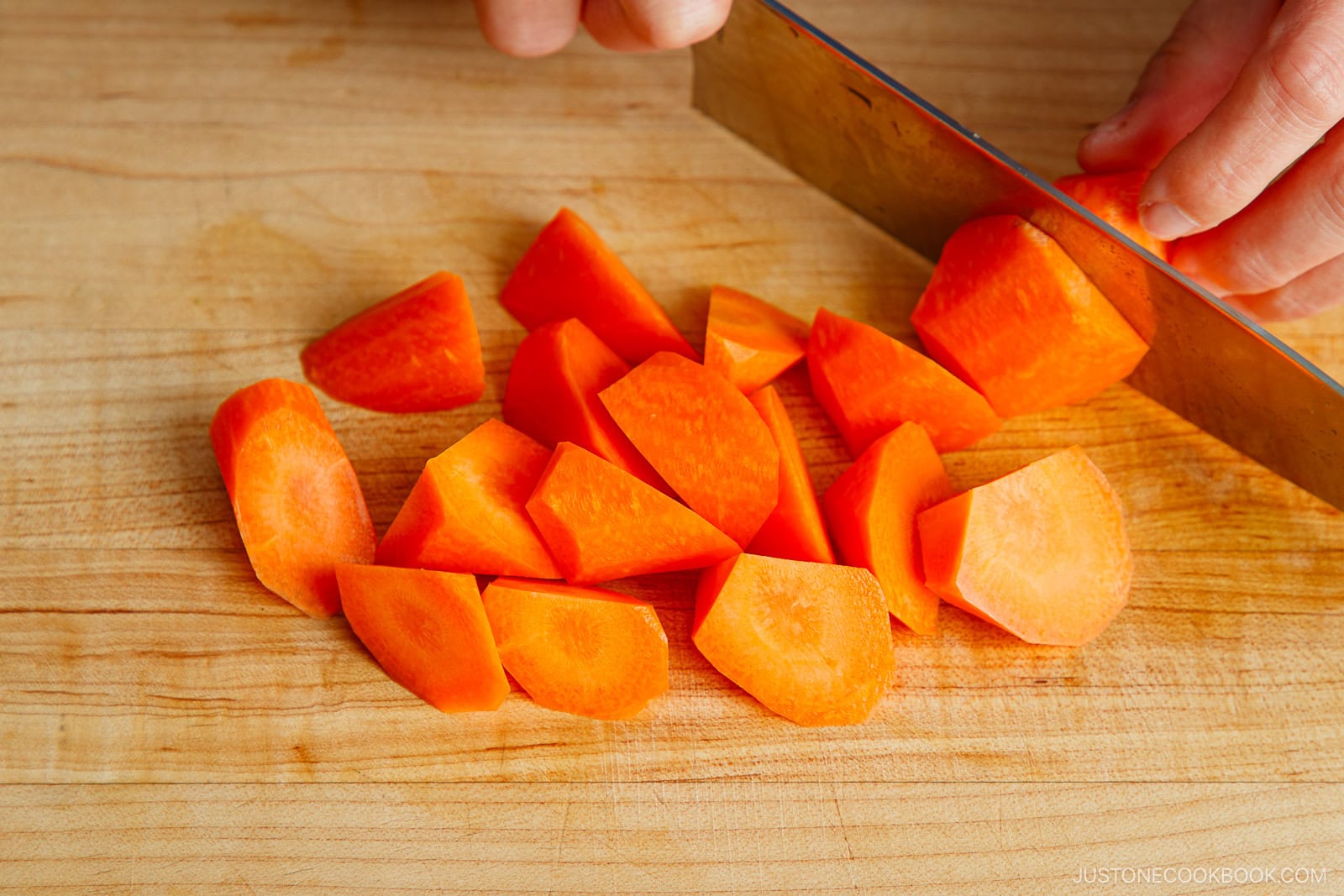

Nami’s advice
- Keep each piece of the same size and shape – This is the key point For Rangiri they can even promote cooking, despite irregular cuts.
- Rotate the vegetables of a quarter on duty – After each slice, roll it 90 degrees before cutting again. I look at my last cutting surface to keep track.
- Cut the same corner each time – I keep my knife in the same position in which the vegetables are rolled with the other hand. Keep the diagonal one for a coherent appearance and to create most of the surface.
- Thick rule – If your vegetables are thick from one end and thin on the other, like a carrot, a rule where it is cut to maintain a similar size and thickness. I always keep the same knife angleSo the blocks have the same general shape.
- Keep the sharp knife blade – I take the knife regularly for safety and precision. In this way, the cut is effortless and you will get very clean cuts.
How to use Rangiri (Random cut) cutting technique
Now that you know how to cut Rangiri, I hope you use this unique and effective technique for vegetables in your home kitchen. Below are some of my favorite Japanese dishes that use this cut.
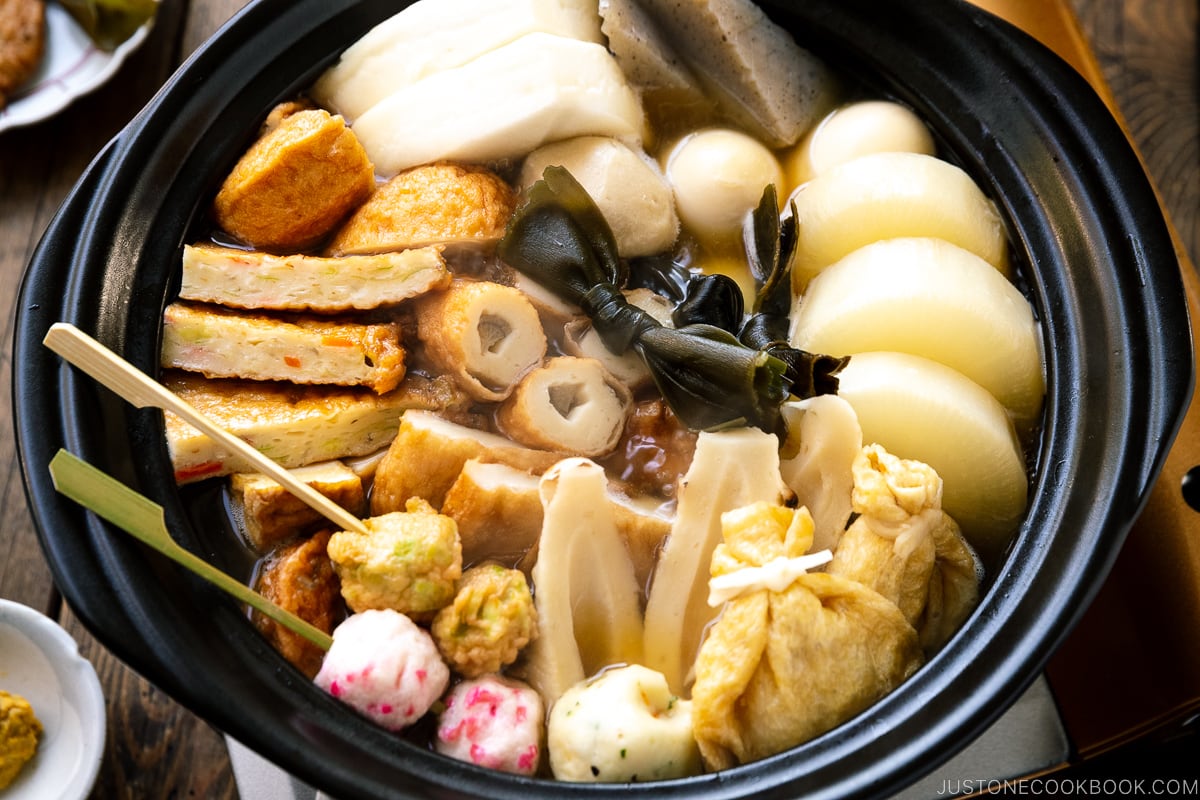
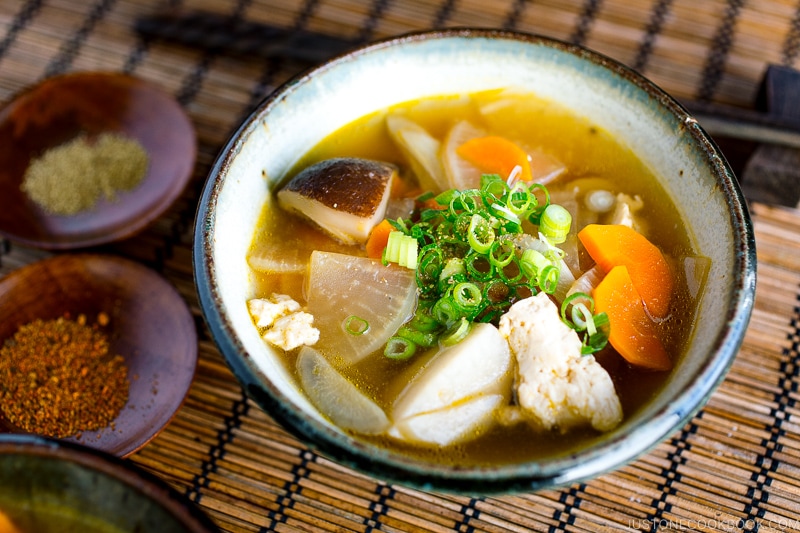
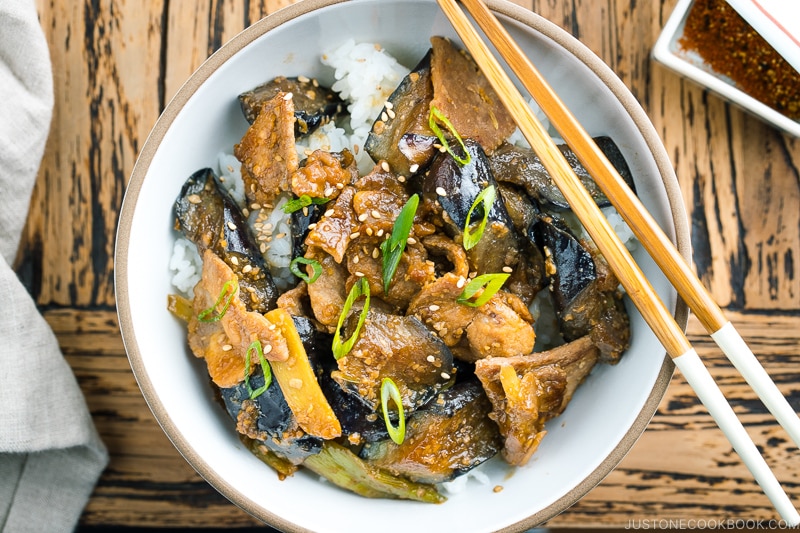
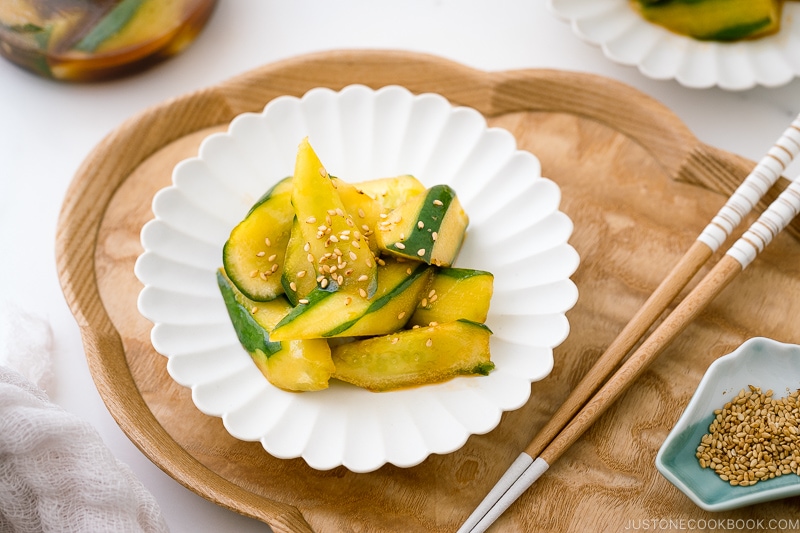
Frequent questions
When preparing Japanese cuisine, I will use many different Japanese cutting methods at home. Some unique skills of the Japanese knife that I use in my daily home kitchen include Ran, egg (shaved cut), Hassutsu-Giri (half moon cut), Zaku-Kiri (rough coast) e Kazari-Kiri (decorative cuts). In addition, I use many basic techniques such as Usugiri (thin stripes), Osogiri (thin slices), wi-giri (round slices), Nanamegiri (diagonal cut) e a set (Julienne Cut). Some others that you may find useful include BUTSUGIRI (block cut or large cross cut), Kakugiri (cube cut or dice cut), Sasagaki (thin chips) e Kawtga (wedge -shaped combs or cuneo cut). With a little practice and patience, you can learn many of these culinary skills using my tutorial on Japanese cutting techniques.
Rangiri is suitable for root vegetables or a Japanese cylindrical vegetables. Look at my guide to Japanese cutting techniques for other methods that work well for aromatic such as onions, garlic, ginger and green onion. Even the cabbage leaves are not suitable for the Rangiri.
Make a diagonal cut. Keep the vegetable on the cutting board and cut the piece diagonally to the desired size with a sharp knife.
Revolves a quarter round. Roll the ingredient of 90 degrees, then cut again to the same corner. Keep the pieces approximately of the same size.
Repeat. Cut → roll → cut → rolls until you reach the end of the vegetables.
Did you make this recipe?
Label @Justonocookbook On Instagram so you can see your delicious creation!
Note of the editor: This post was originally published on December 26, 2012. It was updated and republished on June 14, 2025, with new images and more useful information to guide your kitchen.

